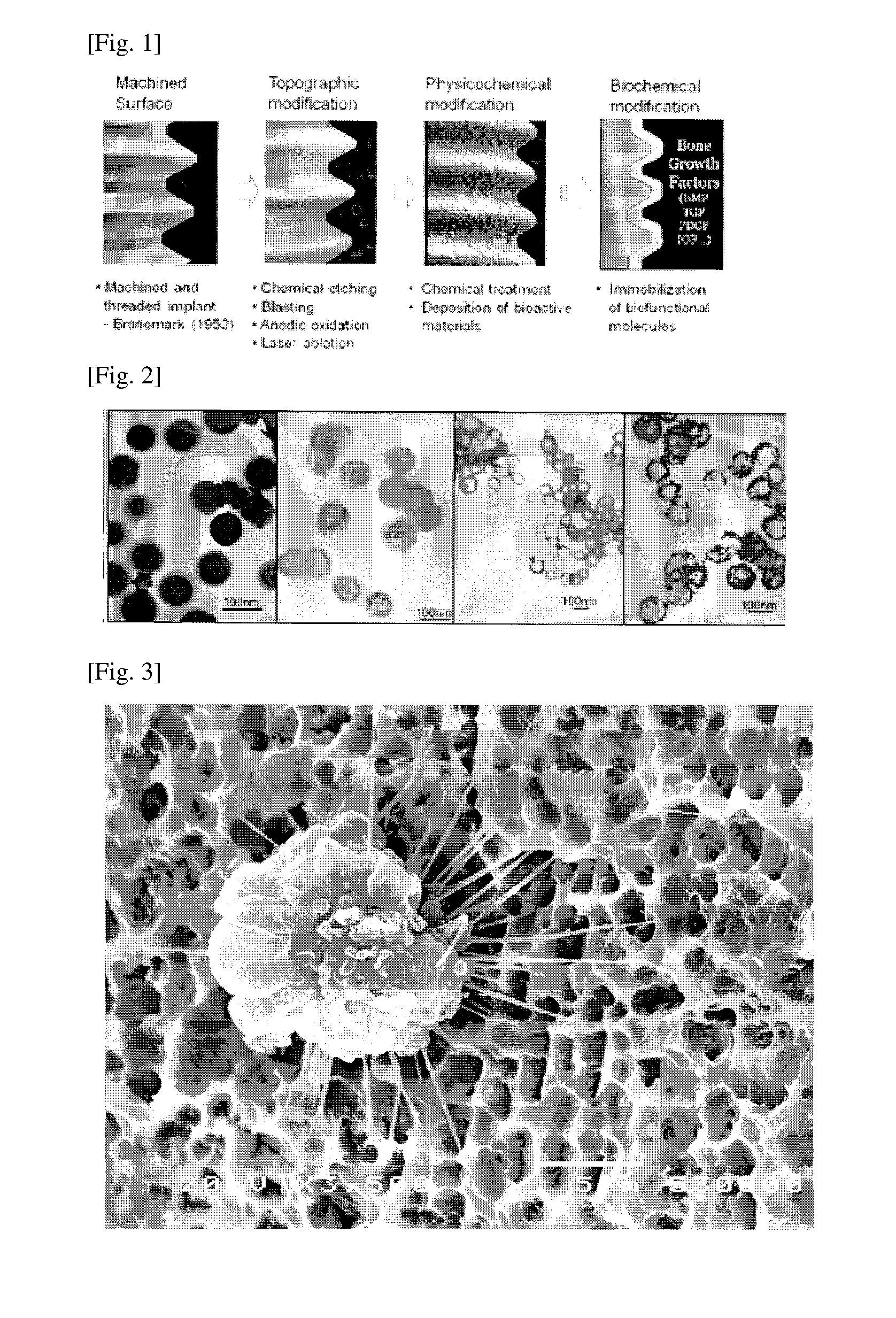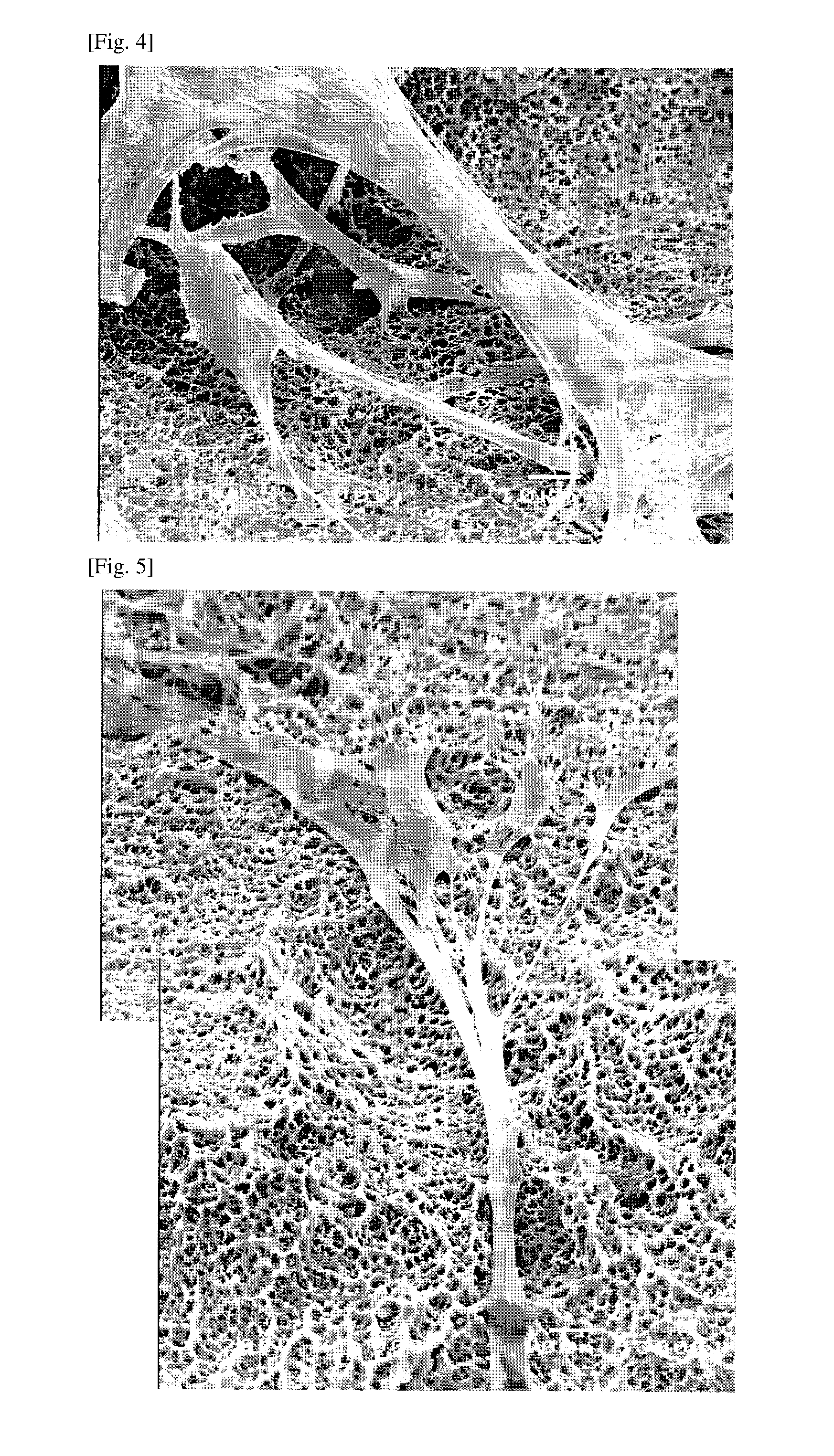Surface-modified hybrid surface implant and method for manufacturing the same
- Summary
- Abstract
- Description
- Claims
- Application Information
AI Technical Summary
Benefits of technology
Problems solved by technology
Method used
Image
Examples
embodiments
[0029]Hereinafter, the present invention will be described in more detail.
[0030]The present invention relates to a method for manufacturing an implant with a hybrid surface, comprising the steps of: (a) treating the surface of an implant fixture with sonication, and washing it with a solvent; (b1) preparing a SiO2 bead, and preparing a nano-sized capsule by using it as a template, wherein a biocompatible material is coated on the SiO2 template and then the SiO2 bead is removed to prepare a hollow nanocapsule, or (b2) preparing a nanocapsule with a biocompatible material; and (c) attaching the hollow capsule prepared in step (b1) or the bead prepared in step (b2) to the implant fixture prepared in step (a) by dipping, stirring or centrifugation to manufacture a first hybrid surface implant.
[0031]In one embodiment according to the present invention, step (b1) may further include the step of loading a functional factor into the hollow capsule.
[0032]In one embodiment according to the pr...
example 1
Preparation of an Implant Fixture with a Hybrid Surface
[0045](1) SiO2 beads were prepared with a diameter not less than 100 nm and not more than 1 μm. SiO2 nanocapsules were prepared according to the procedure below.
1) Preparation of Silica Nanoparticles Dispersion
[0046]Silica nanoparticles with various sizes were prepared by using the Stober method. In the sol-gel reaction, the type of solvent, amount of catalyst, amount of water, and the amount of tetraethylorthosilicate (TEOS), which is a precursor, etc. affect the size of particles. A more specific preparation procedure is as follows:
[0047]1,000 mL of ethanol and 10 mL of deionized water were put into a reaction vessel and then 1 mol of 28 wt % ammonia solution as a catalyst was added, followed by stirring at room temperature for 1 hour. Then, 0.14 mol of TEOS as a silica precursor was added and reacted with stirring at room temperature for 3 hours to prepare a silica nanoparticles dispersion. The resultant silica particles were...
PUM
| Property | Measurement | Unit |
|---|---|---|
| Diameter | aaaaa | aaaaa |
| Force | aaaaa | aaaaa |
| Acidity | aaaaa | aaaaa |
Abstract
Description
Claims
Application Information
 Login to View More
Login to View More - R&D
- Intellectual Property
- Life Sciences
- Materials
- Tech Scout
- Unparalleled Data Quality
- Higher Quality Content
- 60% Fewer Hallucinations
Browse by: Latest US Patents, China's latest patents, Technical Efficacy Thesaurus, Application Domain, Technology Topic, Popular Technical Reports.
© 2025 PatSnap. All rights reserved.Legal|Privacy policy|Modern Slavery Act Transparency Statement|Sitemap|About US| Contact US: help@patsnap.com



